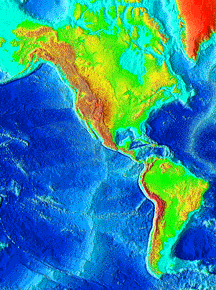This is an image of the ocean floor of the Earth, showing mountain ranges, subduction trenches, tectonic plates, and mid-ocean ridges.
Click on image for full size
Image from: U.S. Geological Survey
Cooling History
A Planet or a moon cools off slowly in time, just like the sidewalk cools off in the evening after a sunny day. The warmth contained inside a planet or moon controls what sort of activity the planet or moon has in the atmosphere or surface. As planetary bodies cool slowly, heat diminishes, and the activities diminish to nothing. Examination of a planet or moon for various kinds of activities tells scientists what stage a body is in it's history of cooling off.
Planets or moons get energy from
Energy from item (2) in this list causes the continents to
drift slowly around the surface of the Earth.
You might also be interested in:
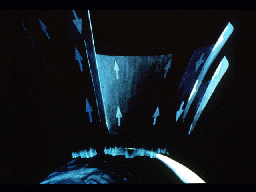
This picture shows the flowing of particles into and out of the auroral zone, as Field-Aligned currents (FAC's) take at short-cut through the atmosphere. Some of the particles entering the auroral zone
...more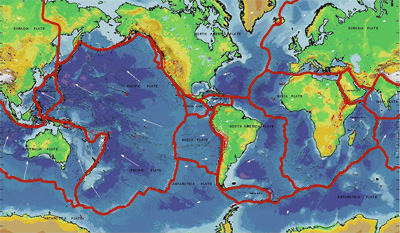
Many forces change the surface of the Earth over time. The largest force that changes our planet's surface is movement of Earth's outer layer in a process called plate tectonics. As shown in this picture,
...more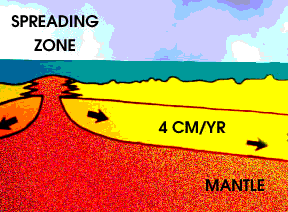
As the Earth cools, hot material from the deep interior rises to the surface. Hot material is red in this drawing, under an ocean shown in blue green. The hotter material raises the nearby layers, and
...more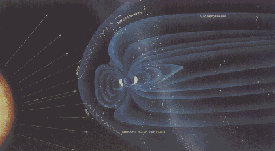
Unlike the Earth, which has a protective shield around it called the magnetosphere, the surface of the moon is not protected from the solar wind. This picture shows the magnetosphere surrounding the Earth,
...more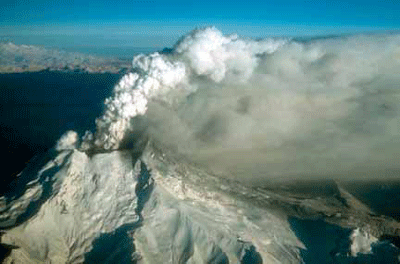
Ash is formed as a volcano erupts when rocks made by the volcano blow apart into millions of tiny pieces. The rocks are still very hot, because they just formed from lava. If the hot rocks come into contact
...more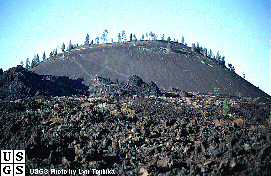
Cinder cones are simple volcanoes which have a cone shape and are not very big. Compare the size of this volcano to the strato-volcano in this image. They are usually made of piles of lava, not ash. During
...more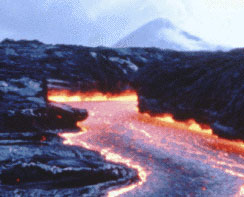
Lava can move in two ways, wide flat lava flows, or through channels which squeeze the lava into a small area. The fastest lava flows move at about 6 mi/hr, an easy jog, but they average between 2/3 and
...more


